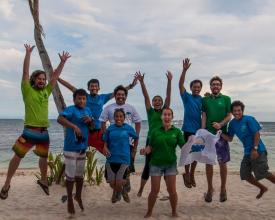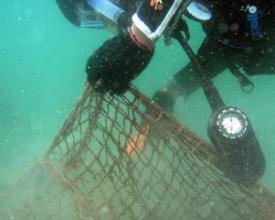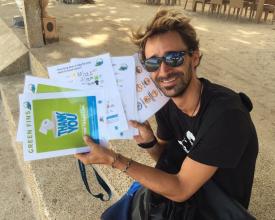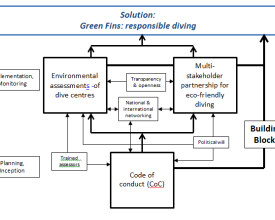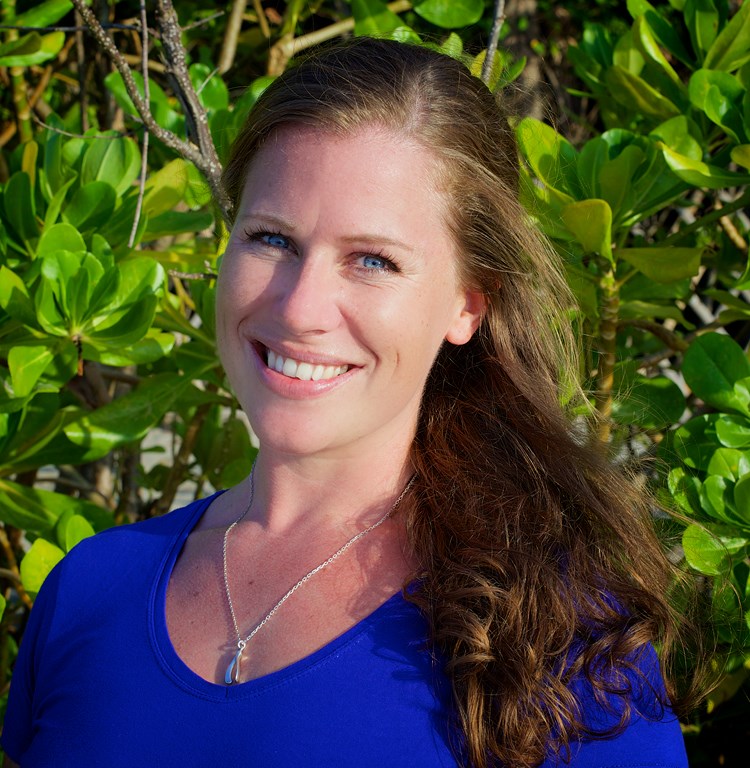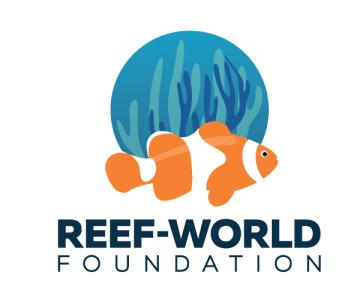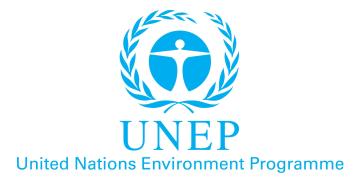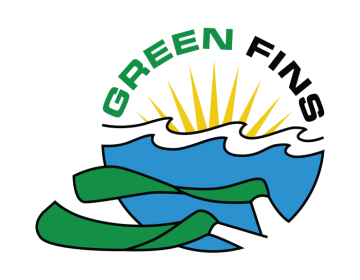
Palmes vertes : Une approche de la gestion d'une industrie de la plongée durable
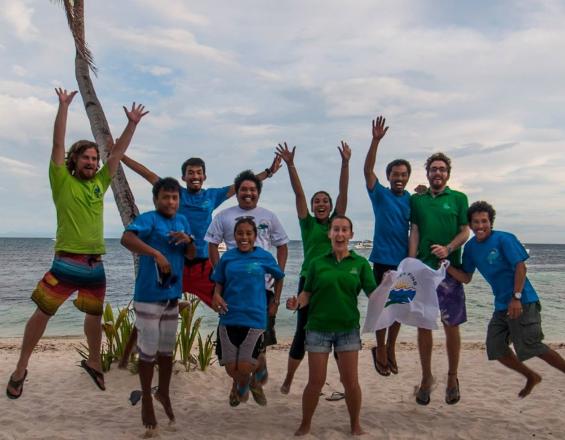
Contexte
Défis à relever
Emplacement
Traiter
Résumé du processus
Le code de conduite (bloc 1) définit les critères d'évaluation environnementale des centres de plongée (bloc 2). Pour parvenir à une prise de conscience et à des pratiques respectueuses de l'environnement, des partenariats multipartites (bloc 3) garantissent la participation et l'engagement de l'industrie de la plongée, des communautés et des parties prenantes ayant des intérêts dans d'autres utilisations de l'environnement marin en jeu. Des évaluateurs qualifiés issus d'organisations internationales et des niveaux national et local permettent la promotion et l'adoption du code de conduite (bloc 1) et son application continue (bloc 2), y compris la surveillance à long terme de la santé des récifs coralliens et des autres habitats concernés. Un dialogue transparent et ouvert entre toutes les parties prenantes garantit l'adoption du code de conduite dans les pratiques quotidiennes, les cadres juridiques et les mécanismes d'application. La volonté politique, qui s'applique à toutes les étapes, est un facteur clé pour parvenir à la solution. Les réseaux nationaux et internationaux sont un moteur pour une coopération durable et une conduite écologiquement responsable de l'industrie de la plongée.
Blocs de construction
Code de conduite
Facteurs favorables
Leçon apprise
Évaluation environnementale des centres de plongée
Facteurs favorables
Leçon apprise
Partenariat multipartite pour une plongée respectueuse de l'environnement
Facteurs favorables
Leçon apprise
Impacts
Bénéficiaires
Objectifs de développement durable
Histoire
En 2009, Reef-World a été invité par le Département des Parcs Marins de Malaisie (DMPM) à effectuer un travail d'investigation sur Pulau Tioman, en Malaisie, afin d'aider à la mise en œuvre de Green Fins pour réduire les menaces pesant sur les récifs coralliens causées par l'augmentation du tourisme de plongée et de snorkeling. En avril 2014, nous sommes retournés à Tioman pour rétablir les palmes vertes et former une nouvelle équipe locale dans le cadre d'un nouveau partenariat entre le gouvernement (DMPM) et une ONG, Reef Check Malaysia (RCM). Ce voyage a été un véritable témoignage du succès de Green Fins, car les centres de plongée qui avaient participé à la formation et au processus d'évaluation de Green Fins en 2009 continuaient à mettre en œuvre les meilleures pratiques, réduisant ainsi leur impact sur l'environnement. En conséquence, sept autres centres de plongée sont devenus membres de Green Fins. Ceux qui étaient déjà membres ont été réévalués et s'efforcent désormais de réduire davantage les menaces qui pèsent sur l'environnement. Cette approche a eu un impact considérable sur la sensibilisation et l'amélioration de l'éducation concernant les menaces qui pèsent sur Tioman et la manière dont elles peuvent être atténuées. Depuis le lancement de Green Fins, nous avons enregistré de nombreux succès, par exemple la suppression des informations sur le site Web du DMPM encourageant le nourrissage des poissons, un restaurant a cessé de servir de la soupe d'ailerons de requins et il existe désormais un lieu central pour l'élimination des piles à usage unique lors des plongées nocturnes, au lieu de les brûler ou de les enfouir. Alvin Chelliah était l'un des évaluateurs Green Fins en formation et dirige désormais les activités Green Fins à Tioman, en complément de son travail avec le RCM. "La palme verte va permettre de relier toutes les questions environnementales ici. Il appartient à toutes les parties prenantes, de sorte que les gens seront beaucoup plus enclins à soutenir ces efforts parce qu'ils auront l'impression d'en faire partie", explique-t-il. Il a mis en place un système de recyclage soutenu par l'industrie de la plongée, les hôtels locaux et les communautés. Il organise la collecte des produits recyclables par un bateau et le bénéfice des ventes est utilisé pour couvrir tous les frais. Lors des consultations initiales, l'un des propriétaires de centre de plongée de l'île a déclaré qu'il "se souvenait de Green Fins mais qu'il avait perdu tout espoir de revoir quelqu'un, mais cela n'a pas d'importance car on m'a donné tout ce dont j'avais besoin pour continuer à suivre les lignes directrices". Ainsi, avec les outils adéquats, certains centres de plongée peuvent mettre en œuvre des pratiques environnementales efficaces dans le cadre de leurs activités. Toutefois, on constate que le système d'évaluation est le plus efficace pour inspirer des améliorations durables des pratiques environnementales à tous les représentants des centres de plongée d'une destination de plongée.

